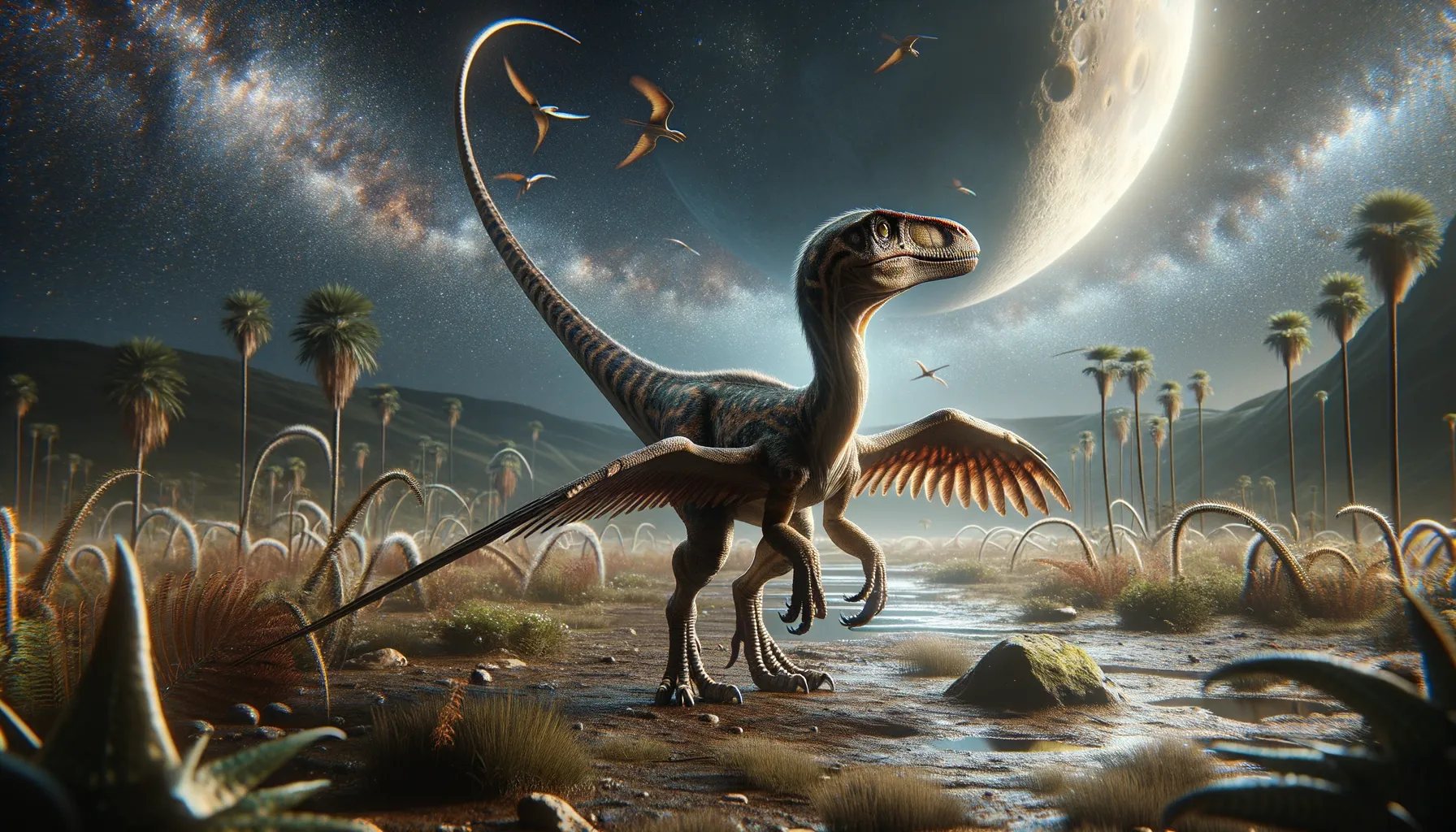
Pneumatoraptor
A swift and airy predator of the past.
Period
Cretaceous
Length
Measured roughly 1.5 meters in length.
Height
Stood approximately 1 meter tall.
Weight
Estimated around 10 kilograms.
Pneumatoraptor was a small, agile theropod dinosaur that roamed parts of Europe during the Late Cretaceous period. Known from limited fossil material, it has intrigued paleontologists with its unique bone structure, suggesting a close relation to birds. The name Pneumatoraptor means 'air thief', hinting at its hollow bones that likely made it lightweight and quick on its feet. Despite limited finds, it adds valuable insight into the diversity of Late Cretaceous dinosaurs.
Diet
Pneumatoraptor was a carnivorous dinosaur, likely feeding on small vertebrates. Its diet may have included insects, small mammals, or other dinosaurs, depending on availability.
Hunting
This dinosaur likely relied on its speed and agility to catch prey. It may have used surprise and quick bursts of movement to outmaneuver small animals.
Environmental challenges
Living during the Late Cretaceous, Pneumatoraptor faced changing climates and rising sea levels. Vegetation types shifted, potentially affecting prey availability. It needed to adapt quickly to these dynamic conditions for survival.
Speed
Likely quick and agile due to its light build.
Lifespan
Exact lifespan is not well-known.
First discovery
Discovered in Hungary in 2010.
Fun Facts
- Pneumatoraptor is a small dinosaur that lived about 85 million years ago during the Late Cretaceous period.
- This dinosaur's name, Pneumatoraptor, means 'air thief' because its bones were hollow like those of birds, making it lightweight.
- Fossils of Pneumatoraptor have been found in what is now Hungary, providing valuable insights into the diversity of dinosaurs in Europe at that time.
- Pneumatoraptor belonged to a group of dinosaurs known as theropods, which also includes famous species like Tyrannosaurus rex and Velociraptor.
- Despite its bird-like characteristics, Pneumatoraptor was not a direct ancestor of modern birds, but rather a distant relative.
- Pneumatoraptor was a carnivore and likely hunted small prey, using its agility and speed to its advantage.
- The discovery of Pneumatoraptor has helped paleontologists understand more about the evolution of small theropods and their ecological roles.
Growth and Development
Pneumatoraptor likely experienced rapid growth in its early stages to reach reproductive maturity quickly. As it matured, it would have needed to compete for food resources and find safe habitats to avoid larger predators.
Habitat
This dinosaur lived in a variety of environments, including forests and floodplains. These areas provided cover and a rich supply of potential prey. It needed to navigate these habitats effectively to find food and avoid danger.
Interaction with other species
Pneumatoraptor's interactions with other species likely included competition and predation. It might have competed with similarly-sized carnivores and scavenged from larger predators' kills. Its small size likely made it prey for bigger dinosaurs.
Natural lifespan
Natural lifespan details remain speculative due to scant fossil evidence.
Reproduction
Little is known about its reproductive habits, but it likely laid eggs like other theropods. Nesting behaviors could have included guarding nests or choosing hidden locations to protect eggs from predators.
Social behaviour
Pneumatoraptor might have been solitary or formed small groups. Such social structures could have been beneficial for hunting or defense against predators. Their interactions remain speculative given the limited fossil record.
Fossil locations
Fossils of Pneumatoraptor have been found primarily in Hungary. These discoveries include portions of its skeleton, which provide insight into its unique adaptations and ecological niche.
